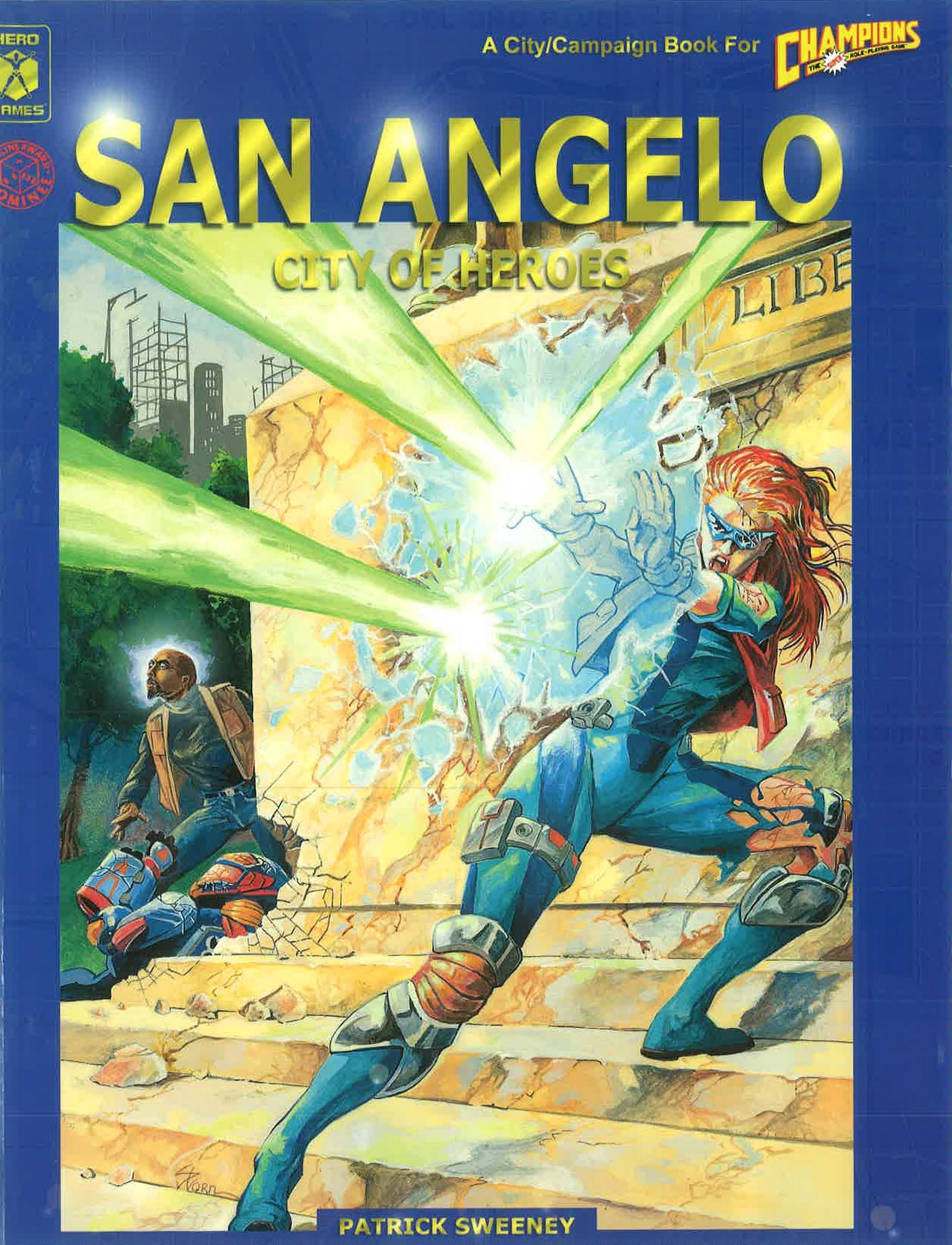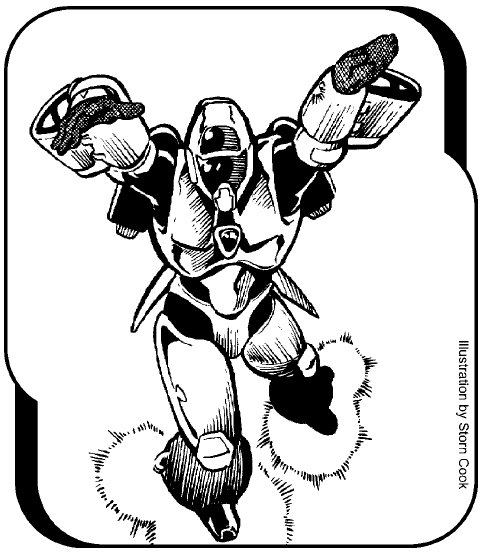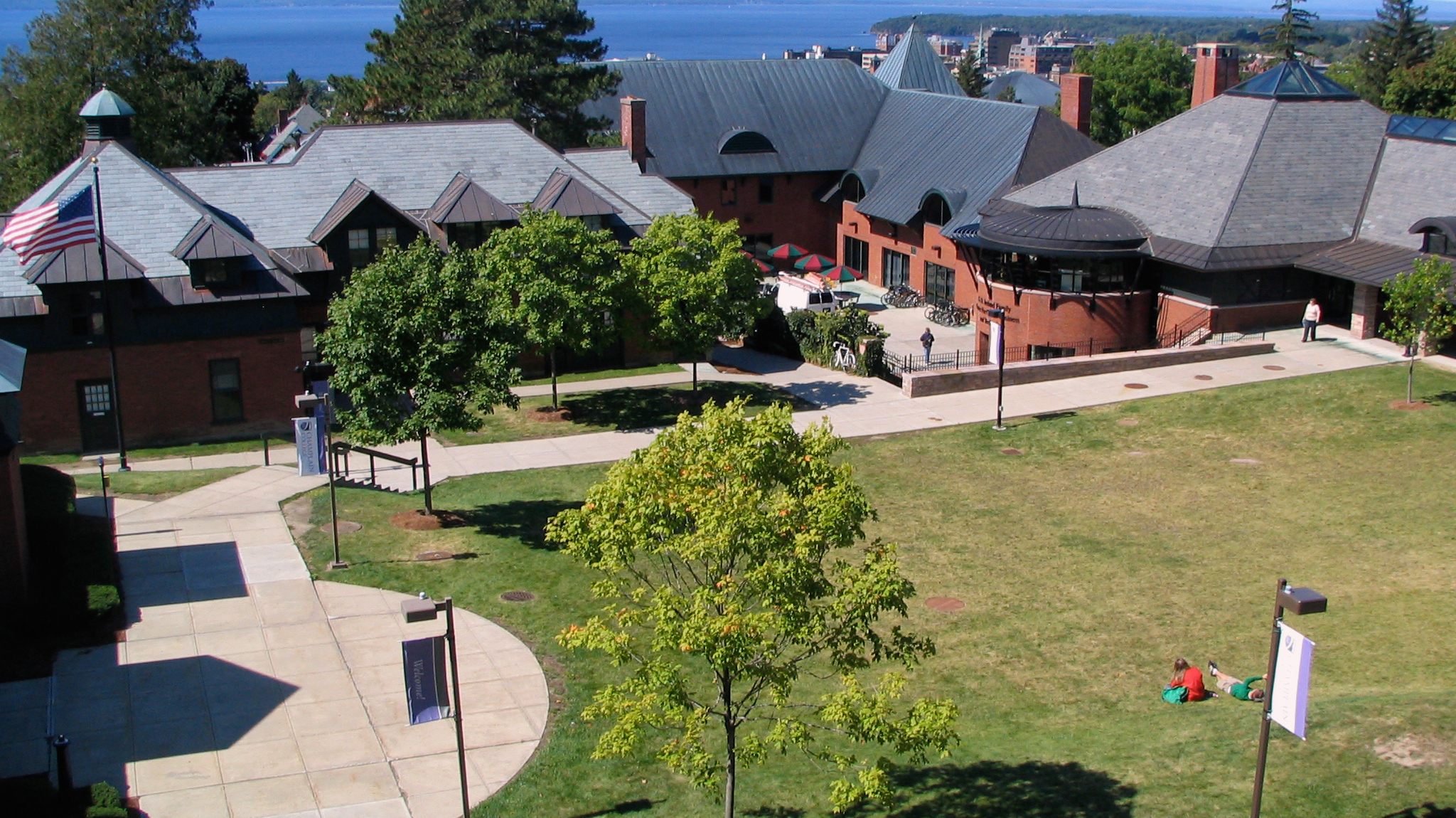
This material was originally developed in 1999 or 2000 as a proposal for a supplement to Gold Rush Games’ San Angelo.
Some quick background: Immediately before pitching this book, I had written Days of Terror, a campaign supplement for Dream Pod 9’s Heavy Gear RPG that followed the same format as The Paxton Gambit. Basically, it was a micro-setting supplement focused on one very specific topic and paired with the detailed overview of a related campaign. At the time, I was really enamored of the format and thought it would catch on with other game lines. Young Heroes was an initial pitch for a similar line of supplements for GRG.
Young Heroes was an initial pitch for a similar line of supplements for GRG.
Don’t bother looking for Days of Terror. I wrote the whole book, but the project was canned due to the poor sales of The Paxton Gambit and A New Breed for DP9. Young Heroes didn’t even get off the ground. As I mentioned when archiving my review of A New Breed, these days I’m considerably less enamored of the format, primarily because the “milestone” approach they use fails to provide the type of specific prep work (like stat blocks) that I think are actually the most essential elements of value in a published scenario. Ideas are cheap; execution is everything.
On the other hand, sometimes one man’s ideas can still inspire others to do great things. I certainly experienced that when Martin Tegelj took my idea of the Temporal Masters and transformed it into a fully developed Doctor Who campaign. In the case of Young Heroes, I had actually developed a complete campaign outline as part of the original pitch. That’s what I’m going to be sharing below, but since it’s almost two decades old I’m also going to be peppering in a few thoughts on how my older and wiser self would change things up to make for a better campaign.
A BRIEF SEGUE
Young Heroes was designed to be a supplement for college-age superheroes in San Angelo. My points of inspiration were the first fifty issues of Amazing Spider-Man, the early New Mutants comics, the second Avengers team (the one with Captain America trying to forge Hawkeye, Scarlet Witch, and Quicksilver into a cohesive whole), the late-’80s JLA (Batman trying to make a roster of second-stringers work), an incredibly obscure (but also wonderful) comic called The Fly from the Impact Comics line, and, oddly, Kurt Busiek’s Thunderbolts (which doesn’t really feature young heroes, but does feature new heroes trying to prove themselves). These days I would add stuff like Bendis’ definitive run on Ultimate Spider-Man, Kirkman’s Invincible (although the latter ends up being a bit more cosmic in scale than what I was aiming for here), and Spider-Man: Homecoming.
What about the micro-supplement part of the book? Well, I certainly hope it would have value if the full book had ever been written. But in outline form it doesn’t really offer anything of note unless you need to be told that a book about college-age heroes would feature information on the colleges of San Angelo, the neighborhoods around those colleges, stock faculty members, local musical groups (The Atlas, Jungle Beat, and the Mississippi Sirens, along with Sarah and the Peacekeepers; at least one of these would have secretly been superheroes), coffee houses and other hangouts, and the like.
This would have all been gazetteer-type stuff. These days, I’d have tried to figure out a more sandbox-style approach with material being presented through much more utilitarian chunks of content. And I’d probably also be looking at some kind of mini-game mechanical box that would strongly model the balance between classes, jobs, and superhero adventures. (Really try to capture that “Peter Parker madly juggling to keep all the parts of his life in the air at once” vibe and push it into hard, mechanical choices that would help drive the narrative.)
ACT ONE: ALL OUR DREAMS AS ONE
First off, and probably most obviously, I’d start by revamping the whole thing into a properly node-based scenario design. Perhaps not a node structure that was heavily bifurcated, but definitely one with a bit more flexibility and dynamic potential. In 1999, I was still trapped within the limited model of linear campaign structure, even though I was beginning some limited experimentation with non-linear scenarios. (Formally stating the Three Clue Rule to myself was, if I recall correctly, still a year or two in my future, too.)
Scenario One – The Birth of Legends. The first scenario is designed to bring the PCs together. A string of daring robberies has been plaguing businesses in the college area for about a week now, with the pace slowly increasing. The cops have caught a couple of the perps – all classmates of the PCs – but all of them claim to not remember the crimes. Plus, none of the stolen money or merchandise has been recovered. The PCs become involved when one of the robberies is carried out right under their nose (either while they are all “conveniently” in the same place or separately, but at roughly the same time). They, of course, capture the perps – who are just ordinary college kids who seem to be acting in some sort of trance. Eventually it’s all traced back to the Psychotropper. He’s been lacing the pizzas being delivered from the university Masked Bandit Pizza with his special drugs. The PCs face him and his “Zombie Horde” down and deliver him to the police. The important thing is that the PCs end up working together to solve the problem.
This is a very weak hook. “Bunch of heroes all respond to the same crime and team-up” is a staple of the genre, of course, but leveraging 4-6 PCs into the proper location, expecting them all to respond appropriately to the villains, and then fall into line for a campaign-long team-up as a result is awkward. It can work, but you’re relying heavily on the metagame expectations of “you’re all PCs, so you’re going to team-up” rather than having that emerge organically from the immediate circumstances.
What I’d probably do today is break up the initial beats of the campaign into a number of micro-interactions that would all end up pointing the PCs towards the Psychotropper’s antics from different directions. Because the different angles of approach allow the players to quickly see many different facets of the problem, this immediately creates magnitude. It also, in my experience, creates really interesting and unexpected initial interactions between the PCs as their vectors all converge on each other. One such micro-interaction might, in fact, be a couple of the PCs being at the same place at the same time and teaming up to follow their leads (but only a couple). For the others, I would try to tie the situation more intimately to the PCs and use the scenes to simultaneously begin putting pieces from their social lives and backgrounds into play. Using Tales from the Loop–style elements to character creation in order to generate a detailed network of connections and then implicating their friends will immediately make the problem meaningful. (These connection networks could also feature in that “balance your lives” mechanics I mentioned earlier.)
Scenario Two – A Common Thread. While busting some petty crooks the PCs are suddenly confronted with mystic firepower. Each of the crooks is carrying a business card on their person imprinted with an apparently random set of five numbers and letters. As they mop things up despite their surprise, the Bard shows up on the scene: A cache of mystic artifacts was recently broken into and he’s been trying to track them down. The PCs are drawn into his investigation, but as they draw near the source of the weapons the crooks they have just caught are consumed by mystic flame. At the end of this scenario the PCs meet Sylvia Inverse. Sylvia was the superhero Lightning during the early ‘80s. She was crippled in a fight with the Reaper in ’85. Sylvia then became an industrialist and is now a billionaire. She has been searching for a group of young heroes who she can sponsor as a team. The PCs came to her attention through their recent actions.
Something that may not be entirely clear from this text is that this was meant to be what I think of as a “Shiki-style” campaign. Shiki was a campaign for Sengoku (another Gold Rush Games RPG, actually) which featured four scenarios which were notably separated from each other by large spans of time. The idea was that Shiki would provide the epic backbone for a long-term campaign, with the GM weaving other scenarios into the spaces between the campaign scenarios. Same principle here. Particularly during Act One, the idea was that the GM would include a number of other “generic” superhero scenarios as the PCs established themselves as local heroes.
Scenario Three – Traitor Unknown. The PCs are taken to see their new headquarters, located in a secret sub-basement of the skyscraper which houses the local branch of Sylvia’s company. They are also introduced to the other two members of the team – Circuit and Starsong. Their tour is interrupted when the monitoring equipment picks up a news report of a bank robbery involving high tech weaponry. Breaking up the robbery the PCs will find cards identical to those found on the mystically armed crooks in the last scenario. This time they succeed in tracking the shipments back to a central source, but as they move in for the final figurative kill they find the base abandoned and evidence that one of their own sent a warning.
NPC members of the team. Always risky because many people have had poor experiences with them. And I, as a GM, hate the hassle of running them and frequently feel like I’m screwing it up because I forget to pay enough attention to the NPC party member to make them truly feel like a member of the party. If I was running this campaign today I would probably (a) try to conspire with one of my players to take on the role of Circuit (the true traitor) and (b) see if I could find a co-GM or another faux-player willing to take on the role of Starsong (the false traitor) while also disappearing for several sessions (as described below).
Scenario Four – Our Foe, Ourselves. This scenario starts with the official announcement of the team’s formation – a major media event. Later, while Starsong is on duty, the monitoring equipment intercepts a police call to a warehouse where strange energy weapons are being used. The team dispatches at once, but when they arrive they find the warehouse empty and undisturbed. This pattern of “phantom messages” repeats itself a few times… each time while Starsong is on duty. Finally a similar call comes in while Circuit or one of the PCs is on duty, but this time the call is real. The PCs encounter a group of red-hooded crooks calling themselves “Servants of the Scarlet Sect”. The PCs fight them to a standstill, but then they disappear just as cop cars arrive. The “Servants” don’t appear on the security tapes – only the PCs wreaking havoc; all sorts of technological equipment is missing from the warehouse; and a security guard is found murdered in a backroom.
ACT TWO: IN THE SHADOW OF OUR GREATNESS
Scenario One – The Shattered Dream. The team suddenly finds itself a fugitive from justice. Sylvia Inverse believes their version of events, but since her connection to the team is known she is under strict surveillance and can do little to help them. Most of this scenario will be played out in the PCs’ secret IDs as they live out their lives on campus, talking with friends – some of whom support the new team, some of whom despise it. In the end the PCs are forced to take action when the Mad Bomber tries to blow up the school. Just as they finish putting the kibosh on the Bomber, they are suddenly confronted with a new problem: The Justice Foundation has shown up to take the fugitives into custody. Cliffhanger ending.
For maximum impact, this scenario requires proper setup: The campus relationships need to be established and they need to have some real stakes to them. In the near future I’ll be talking about the “exposition drip” technique you can use to make sure these elements are properly introduced before you need them to fire on all cylinders. The other thing to look at here is properly establishing the tension between the safety of remaining safely hidden in their civilian identities and the responsibility they feel to right wrongs. The scenario would probably play best with a sequence of temptations, each forcing the players to make hard choices about their priorities. (And also inviting them to find creative, clever, and/or stealthy solutions to problems in order to avoid exposing themselves.)
Scenario Two – Fugitives of Justice. This scenario opens with the conclusion of the battle with the Justice Foundation from the first scenario. The PCs should manage to extricate themselves from the situation.  Later, the PCs are tracked down and attacked by the Foundation once again, but this time with the twist that it was the Scarlet Sect who lead them to the PCs. Evidence after the battle seems to reveal that Starsong betrayed their location. While they are in the middle of dealing with that situation, members of the Scarlet Sect suddenly appear as if out of thin air in the midst of the PCs. They kidnap Circuit and disappear.
Later, the PCs are tracked down and attacked by the Foundation once again, but this time with the twist that it was the Scarlet Sect who lead them to the PCs. Evidence after the battle seems to reveal that Starsong betrayed their location. While they are in the middle of dealing with that situation, members of the Scarlet Sect suddenly appear as if out of thin air in the midst of the PCs. They kidnap Circuit and disappear.
Planning superhero campaigns is tricky because traditional superhero plots tend to turn on the specific outcomes of big, show-piece fights. Assuming/predetermining the specific outcomes of fights is a really easy way to double stamp your passport to Railroad-land. But if you try to AVOID doing that, you can end up with narrative structures which AREN’T driven by big, show-piece fights, and then your traditional superhero campaign doesn’t feel like a traditional superhero narrative.
Regardless, I would definitely try to avoid doing, however, is having the exact same fight twice in the same scenario and assuming a specific outcome for each fight, despite the fact that there seems to be little utility in HAVING two separate fights. I’d take a look at Principles of RPG Villainy and have the PCs hunted by more than just the Justice Foundation.
Scenario Three – Hostage! With Circuit gone and Starsong fleeing under suspicion, things are going badly for the PCs. The only good news is that Sylvia has been keeping a covert eye on their monitoring devices, and during their last encounter picked up an odd electronic signature from the Scarlet Sect – she thinks it may be what allowed them to cloak their presence in the surveillance cameras… but she’s going to need to get more readings. At this point they are contacted by a shadowy figure calling himself Mastermind, the figurative head of the Scarlet Sect. He offers the PCs the chance to join the sect.
This is not actually a scenario. It’s literally two phone conversations. I probably would have figured that out when it came time to actually develop this campaign.
Scenario Four – Our Hopes Fulfilled. At worst its a trap; at best its an offer designed to damn them all. But the PCs are encouraged by Sylvia to take the bait. It pays off: During a climactic battle with the Justice Foundation (again lured into the situation by Mastermind’s manipulations), Sylvia Inverse gathers enough data on the signals to decode the original tapes – revealing that the Sect members were on them all along. Mastermind manages to escape, but the PCs have the evidence they need to clear their names.
ACT THREE: UPON THE PATH OF FATE
Scenario One – The Siren’s Song. The PCs are approached by Sylvia, who claims to have traced the signals to a specific warehouse. But it turns out to be a trap. They manage to save Circuit anyway when Starsong reappears to save them, and he suggests that they test Sylvia to see if she’s really a clone. It turns out that she is. Although she professes her innocence, the PCs probably aren’t buying it – and she’s forced to flee.
Scenario Two – The Island Realm. Meanwhile the PCs have figured out where Mastermind’s real base is – on a small island in the Pacific. This is the lead up to the big wrap-up: Fists fly and powers boom. It turns out that Mastermind is the original Lightning, who was driven insane by her injury. The Sylvia who the PCs have known is a clone, but she’s been living Sylvia’s life.
Reviewing my notes from 1999/2000, this is one of the major core ideas of what I wanted the campaign to accomplish: Create an atmosphere of suspicion, paranoia, and false identity. Implicate their boss as being a cloned impostor. Have them run a test and discover that she IS a clone – oh my god! And then have the big reveal where it turns out that the clone is actually the good guy and is, in fact, a more faithful preservation of the original’s personality before their mind was broken.
What’s missing here, however, are some key exposition drips: Sylvia’s accident needs to be narratively incorporated before the big reveal. The possibility of a clone (or multiple clones) being involved needs to be set up so that the accusation against Sylvia is a payoff instead of a random curve ball. It would also help to clearly set up how the PCs can test for a clone before they need to do it here.
Scenario Three – The Final Hour. And here’s the big wrap-up: Fleeing the island, Mastermind returns to San Angelo – planning to seal the city away from the outside world using her technology. The PCs have to get inside the city, and then defeat Mastermind once there.














What would you do if instead of fighting the Justice
LeagueFoundation, the PCs allowed themselves to be taken into custody in the hopes of clearing their names?Have Mastermind (try to) break them out of prison. Whether they go with Mastermind’s minions or not, the resulting fallout should give Sylvia enough data to reverse-engineer the “camera blind” that’s being used to frame the PCs.